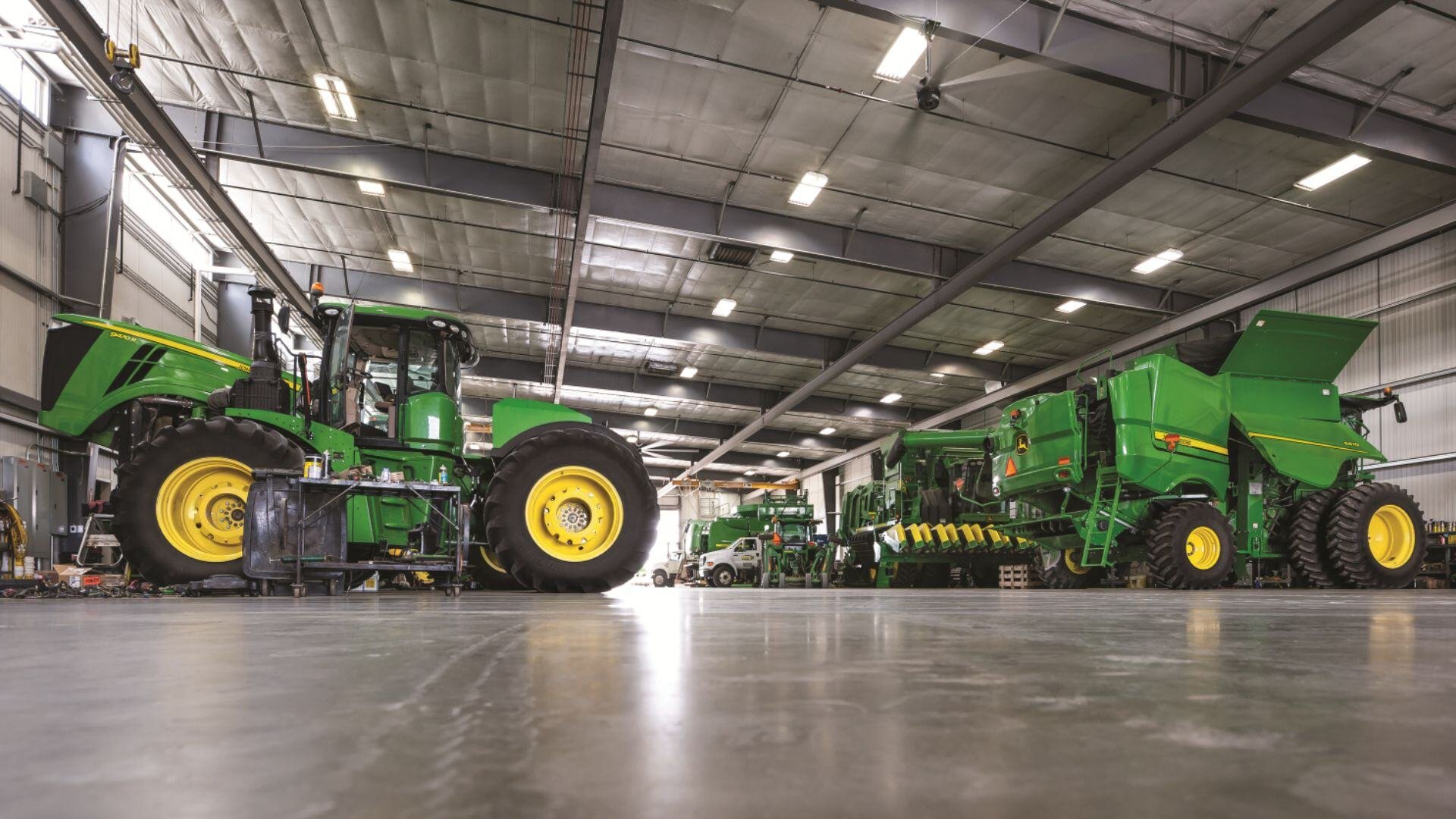When Should I Replace My Tractor Tires?
Published: October 12, 2024
Updated: December 5, 2024
|
Service and Parts
Tires and tracks play a crucial role in maintaining efficiency on the job–especially in the Midwest, where our terrain and weather conditions can vary so much. So, you don’t want any guesswork when it comes to replacing your tires. Here’s a quick list of what to pay attention to, so you’re not left stuck in an emergency situation.
1. Tread Wear
This is the simplest and most important indicator of when to replace your tracks or tires. If your tread has worn down to 20% or less of its original depth, it’s time to replace them. In wetter conditions, sufficient tread is necessary to ensure proper traction and fuel efficiency. Additionally, improper tread depth can lead to unwanted soil compaction.
2. Cracks and Sidewall Damage
Seasonal fluctuations in weather can cause cracks to form on your tire’s sidewalls. It’s especially important to look out for cracks after harsh winter temperatures. While minor cracks aren’t uncommon, deeper cracks, bulging, or sidewall separation are signs that your tires could fail soon. Avoid unnecessary downtime, and replace your tires before those cracks become a problem.
3. Track Deterioration
Tracks and tires give similar indications of wear–keep an eye out for visible wear or uneven tracking. In Ohio and Indiana, our mixed terrain puts additional strain on the tracks, so you should be regularly inspecting for signs of wear, slippage, or reduced traction.

4. Performance and Efficiency
You’ll notice a drop in fuel efficiency when your tires are no longer performing optimally. Additionally, as we mentioned, increased ground compaction is a sign that your tires are getting worn out. John Deere’s precision farming can help to identify issues in performance and efficiency–use this data to monitor potential tire issues.
5. Age
Finally, the age of your tires can easily indicate whether your tires need to be replaced. Even if your tires aren’t showing visual signs of wear, most tires will need to be replaced after 5-6 years. You can extend the life of your tires by regularly rotating and maintaining your tires–but when it comes to old tires, it’s better to replace them early than to fail in the field.

Final Thoughts
John Deere equipment is durable and efficient, but all equipment requires maintenance and care. The weather and terrain conditions in Indiana and Ohio require us to keep a close eye on tires and tracks to ensure smooth and efficient work. So, when in doubt, reach out to your local Koenig Equipment to discuss the needs of your machine, and to consider your replacement options.
Subscribe to our Newsletter
Recent Posts
- Winter Mower Must-Do: The Simple Service That Saves Your Spring
- December 2025: Koenig’s 12 Days of Giveaways Bring Extra Holiday Cheer
- Koenig's Custom Used Equipment Notifications Are Here
- Winter Skid Steer Maintenance: Prep Your John Deere for Snow Season
- How Total Seed Production Leveled Up 2025 With John Deere Technology
